Opensignal Examine the Impact of 4G Spectrum on UK 5G Speeds

A new study from crowd-sourced mobile benchmarking firm Opensignal has highlighted how mobile broadband users in Germany, Italy and the UK saw “significantly faster” 5G average download speeds when they were also connected to additional amounts of 4G spectrum, through older 4G technology.
At present, existing 5G deployments in the UK are using Non-Standalone (NSA) hardware and systems, which can still deliver impressive mobile data speeds, but they also remain aided (or hobbled) by existing 4G infrastructure and Dynamic Spectrum Sharing (DSS). One key advantage of this approach is that it enables operators to deploy 5G much sooner, but that’s not the only benefit.
The future move to adopt pure end-to-end Standalone 5G (SA) networks will resolve this and should thus deliver various improvements, such as ultra-low latency times (fast), network slicing capabilities and better support for Internet of Things (IoT) devices. But in the meantime, most commercial 5G networks in the UK are still NSA, and it will take time for SA coverage and support to mature.
Advertisement
For its part, Opensignal seems to have been surprised by just how much of a broadband boost 5G mobile networks received by harnessing existing 4G spectrum. “In the UK, when we compared the same-sized continuous blocks of 40MHz in the 3.5GHz to 3.7GHz bands used for 5G supported by different bandwidths of 4G spectrum, we saw that UK operators managed to significantly boost average 5G download speeds using additional 4G spectrum capacity,” said the benchmarking firm.
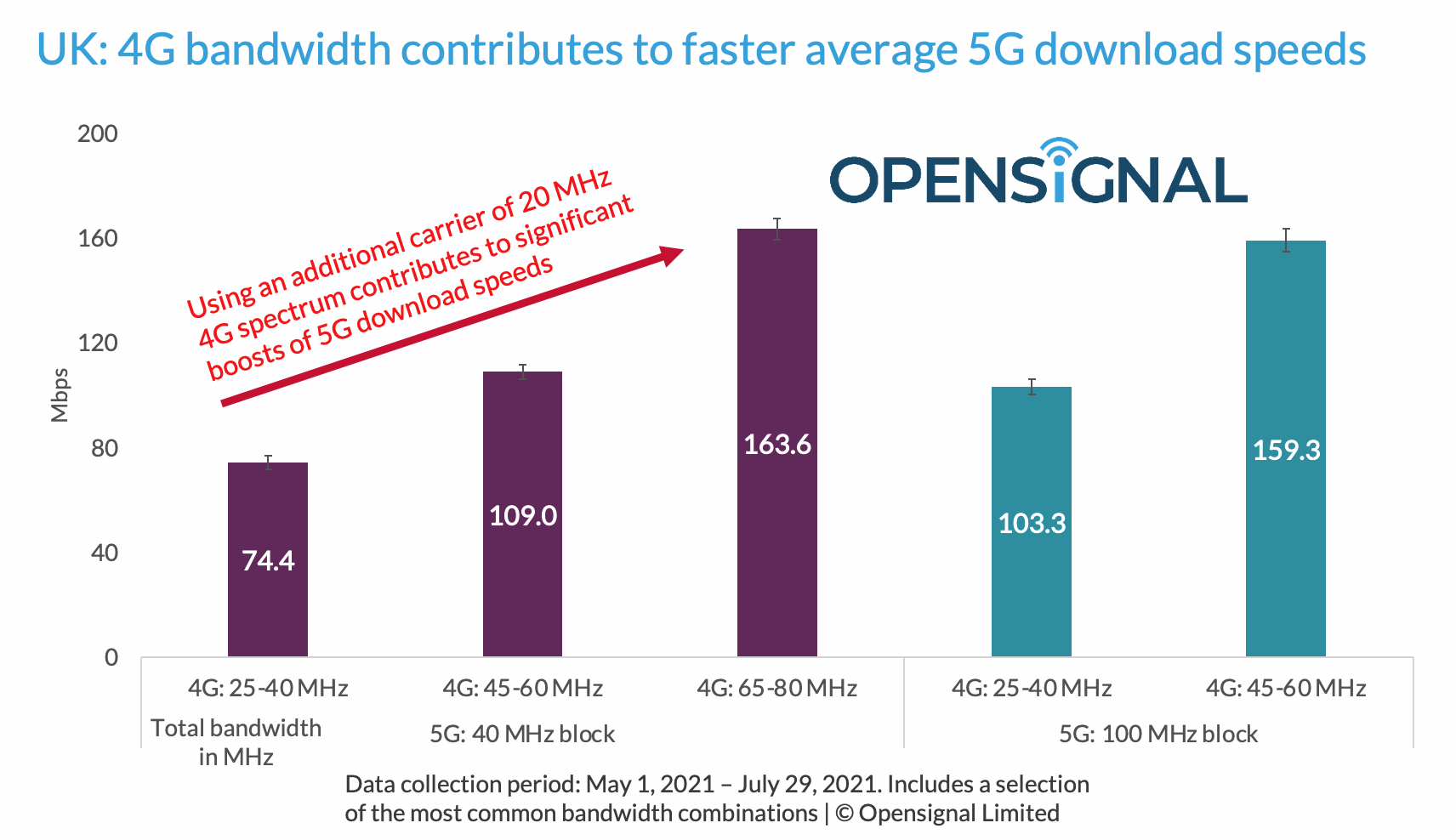
As above, with 25-40 MHz of supporting 4G spectrum, UK operators achieved average 5G download speeds of 74.4Mbps. An additional 20MHz (45-60 MHz) – which would mean using an extra carrier, as these can go up to 20MHz at maximum – boosted the average 5G download speeds experienced by our users by 46.5%, to 109Mbps. Another 20MHz (65-80 MHz) allowed our users to see a speed increase of 50.1% (compared to 45-60MHz), up to 163.6Mbps.
Opensignal also saw a significant boost in speed from using extra 4G spectrum in instances when operators used a larger continuous block of 100MHz of 5G spectrum – higher by 54.2%, rising from 103.3Mbps to 159.3Mbps. A similar outcome was seen in Germany and Italy. Suffice to say that this helps to show why having a strong 4G network, with lots of spectrum to hand, is still important in a 5G world, at least for now.
Advertisement
We think it would have been useful to see how the results split down by mobile operator, but unfortunately Opensignal didn’t include that data. Ofcom has of course just auctioned off additional 5G spectrum in the 700MHz and 3.6-3.8GHz frequency bands (here), which in time may also impact this picture.
Mark is a professional technology writer, IT consultant and computer engineer from Dorset (England), he also founded ISPreview in 1999 and enjoys analysing the latest telecoms and broadband developments. Find me on X (Twitter), Mastodon, Facebook, BlueSky, Threads.net and Linkedin.
« Giffgaff UK Launch Special Mobile Data Goodybag for Students








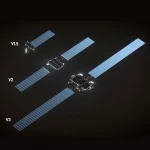

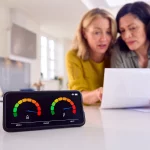
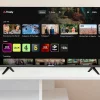
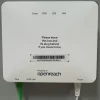
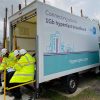

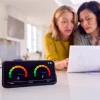







































A decent 4G from Virgin would be nice, never mind 5G!
Virgin uses the Vodafone network and I’ve never experienced poor service from Vodafone.
I’m hoping they start to rollout 5G faster; as my main number is with O2 and they are the worst I’ve ever experienced. They are the new Three.
Underlines that really, 5G currently is just 4G+++, tagging on extra spectrum (40-100mhz channels) and fancy antennae (MaMIMO) onto existing 4G networks.
That’s not to belittle the benefit that adding the extra spectrum can have, but we’re still yet to really see the hype of 5G realised.
That’s cos 5g is marketing tosh currently, its 5g radio’s on 4g mast cores, a completely pointless exercise in making carriers look good.
Right brains of Britain at Open-signal aren’t they?
The reason “mobile broadband users in Germany, Italy and the UK saw “significantly faster” 5G average download speeds when they were also connected to additional amounts of 4G spectrum”, is because its “not stand alone 5G”, Its actually a 5g radio just using the 4G core.
Not stand alone 5G (NSA)is like calling early HDTV’s (which only provided 720p) “HD ready”. It would be far better if they called the current NSA standard of 5G “Pretend 5G” because until its stand-alone 5G it won’t be worth bothering with.
I was surprised after upgrading to a 5g handset to do a speed test and got 700ish down and 100ish up, which is faster than my virgin cable at home. This was on three near Queen Mary’s hospital, Sidcup, London. Other tests in the region are more of the 100 order that I was expecting
“Decent 4G would be nice, let alone 5G”
I love this sort of comment. Why do you think a subsequent generation of technology to 4G might be needed, eh?